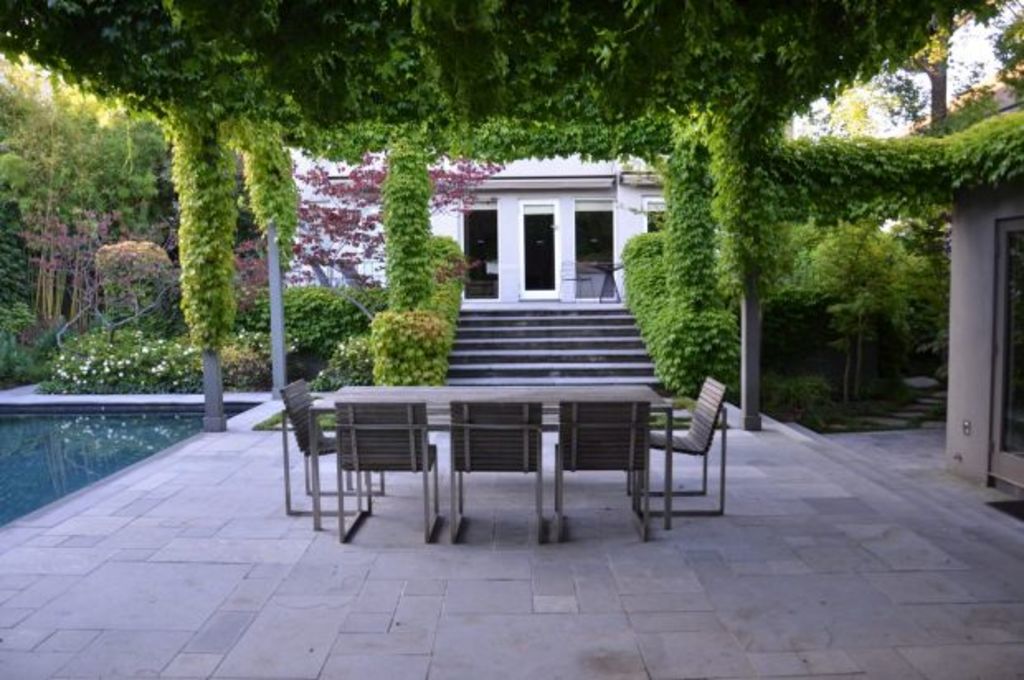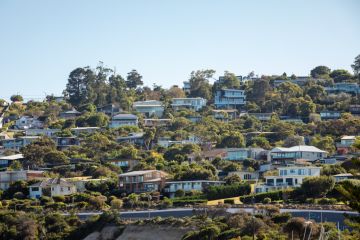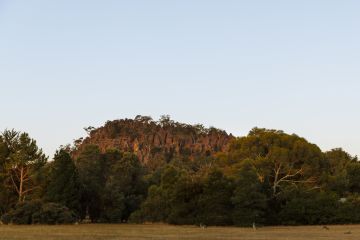How to style an outdoor area: The biggest mistakes Australians make

The balconies along our busy urban streets display an array of outdoor settings. Whether the residents are game enough to sit out there with a glass of wine as the trucks zoom by is unknown, but it’s telling of the Australian obsession with outdoor life.
From tiny terraces to enviable blocks of land, Australians understand that living in the “lucky country” brings with it an obligation to really live here – breathe in the eucalypts and see the blue sky. But as we gamely squeeze out every potential for indoor-outdoor living, some experts believe we’re getting the details wrong.
“So many of us choose imported furniture for our outdoor spaces – there’s been an influx of Balinese furniture in teak,” says Mike Hayes, veteran furniture maker at Makers Lane. “But when it’s built in areas with high humidity and comes to live in, say, Melbourne with its relatively dry climate, it dries out then splits and causes all sorts of problems.”
Although some designers still favour Indonesian plantation teak – so long as it’s FSC-certified – most recommend local alternatives. Hayes likes stringybark and ironbark, or spotted gum for its natural resistance against moisture, while Jo Foong at Foomann Architects also likes the durability of blackbutt and silvertop ash.
“The hotter the environment and the more exposed the timber is to sun, it will require regular maintenance,” says Foong. “That said, we often leave timbers to grey naturally, and spotted gum has traditionally been used for boardwalk decking seen along the coast.”
Other popular materials that don’t quite cut it in most Australian climates are wicker, cane and rattan, but there are more practical alternatives available now and the experts agree that when shopping it’s key to steer clear of cheap versions.
“The biggest mistake is going for a knock-off that will fall apart in three years,” says Myles Broad at Eckersley Garden Architecture. He suggests powder-coated stainless steel for outdoor settings. “It’s durable and wears well in harsh sun and coastal gardens. It’s also lightweight and blends into garden settings if chosen carefully.”
The ideal outdoor space should be an extension of the living area with the same level of comfort. So where do we go wrong with upholstery?
- Related: How to dine outdoors in the cooler months
- Related: Beautiful outdoor living spaces
- Related: How to create an al fresco area
“Bringing cushions in from the rain is always a good idea, despite technological advances meaning certain fabrics and foams can be left outdoors,” says Broad. “Look for cushions with removable covers… [and] quality outdoor upholstery will last longer than anything off the shelf for $5.”
When it comes to decorating an outdoor space Broad also prefers “deciduous canopies over parasols or shade cloth”. “Virginia creeper is fast-growing and only needs a lightweight pergola to support it. A curtain of green wins over a mouldy parasol every time.”
For those who don’t have a green thumb, most good quality open weave designs are UV-resistant, as is true canvas.
As for outdoor storage, Foong says steer clear of cheap laminated products. “Water is the killer. If it gets between layers, the material will blow up and fail. There are high moisture-resistant chipboards available, but marine-grade ply is a better choice – all surfaces and cut edges should be treated and maintained.”
Broads recommends a test run before storing anything electrical or precious in the garden. “Built-in storage can easily be incorporated into the hardscape, for example timber seating can double as a storage box, while a barbecue can fit a dog kennel underneath.”
Foomann favours built-in seating for its indoor-outdoor designs, always taking into account the city-dwelling Aussie’s spatial limitations. As Broad notes: “Open space has become more valuable than a heavy formal seating area.”
Despite the vastness of our land, the value of outdoor space can’t be underestimated, so we may as well make the most of what we have.
We recommend
We thought you might like
States
Capital Cities
Capital Cities - Rentals
Popular Areas
Allhomes
More







